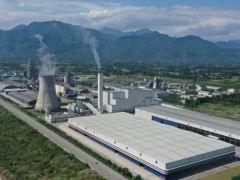先锋自然资源公司认为:受限制的产量增长将在中期提振原油价格
成本上升限制了产量增长,侵蚀了利润率
一些页岩行业高管认为,二叠纪盆地石油产量到达峰值只有五六年时间了
据油价网2023年6月11日报道,美国最大单一投资页岩生产商先锋自然资源公司的一位高管日前表示,由于供应增长仍然有限,欧佩克+继续限制产量,油价将在今年晚些时候上涨,在未来3到5年内在每桶70至100美元的范围内交易。
在休斯敦,先锋自然资源公司执行副总裁贝斯·麦克唐纳在能源市场分析机构RBN能源公司召开的原油出口会议上对路透社表示,劳动力和材料成本上升正在减缓美国页岩产量的增长。此外,页岩投资者希望获得更多回报,并限制支出。
尽管在过去一年半的时间里,油价在很长一段时间内都没有跌破每桶70美元,但成本上升限制了产量增长,侵蚀了利润率。
麦克唐纳对路透社表示,尽管欧佩克努力推高油价,但利润的挤压确实阻碍了美国勘探和生产公司的重大发展。
“总体而言,你仍将看到温和的(生产)增长率和较低的再投资率,因为我们继续专注于向股东返还现金。”先锋自然资源公司的这名高管补充道。
近几个月来,对向股东返还现金的关注,加上成本上涨和政府发出的喜忧参半的信息,拖累了美国石油产量的增长。
EIA本周上调了对美国原油产量增长的预期,预计今年美国原油日产量将增加72万桶,高于此前预测的64万桶。
然而,页岩业的高管们却不那么乐观,一些人认为,随着钻井公司耗尽黄金探区面积,二叠纪盆地的石油产量将在五六年后达到峰值。
美国石油高管们已经在3月初表示,由于美国页岩产量增长放缓,欧佩克将再次成为全球石油供应中最具影响力的力量,而且在可预见的未来仍将如此。
先锋自然资源公司首席执行官斯科特·谢菲尔德今年早些时候曾对英国《金融时报》表示:“我认为目前全球负责石油产量增加的是三个国家——他们将在未来25年负责。”
“沙特第一,阿联酋第二,科威特第三。”
与此同时,谢菲尔德表示,二叠纪盆地的石油产量峰值距离我们只有五六年的时间,预计到那时,这个最大页岩生产盆地的主要钻井探区面积将会耗尽。
响尾蛇能源公司执行副总裁兼首席运营官丹尼·韦森5月份在哈特能源公司召开的Super DUG活动上表示,二叠纪盆地的产量可能在2030年左右达到峰值。
他表示:“本十年结束前……前后几年,你可能会看到二叠纪盆地石油产量的峰值,并开始趋于稳产。”
“我们花的时间越长,它就会越长时间达到稳产状态。但我们越快到达稳产,它就会下降得越快。”响尾蛇能源公司这名高级主管补充道。
韦森说:“我认为,十年后是考虑(产量持平或下降)的好时机,但不能把二叠纪盆地排除在外。”
最新的达拉斯联邦储备银行第一季度能源调查结果显示,3月底,由于成本飙升和前景恶化,得克萨斯州、新墨西哥州和路易斯安那州(包括二叠纪盆地在内的最大页岩油气藏所在地)的油气增产陷入停滞。
在对调查的评论中,一位美国勘探与生产公司的高管指出:“EIA本周发布了年度能源展望报告,预测未来30年美国的石油产量将持平。我们可能应该告诉他们,我们将在5年内看到页岩产量的大幅下降。”
另一位高管说,“当前政府的政策将继续对国内天然气和石油生产产生负面影响。未来几年,石油和天然气价格将飙升,我们将任由那些讨厌我们的国家摆布”。
李峻 编译自 油价网
原文如下:
Pioneer Sees $70-$100 Oil As Supply Growth Remains Constrained
· Pioneer: Constrained production growth will lift crude prices in the medium-term.
· Higher costs are constraining production growth and eating into margins.
· Some shale executives believe peak Permian oil production is only five or six years away.
Oil prices are set to rise later this year and trade in the $70-$100 range over the next three to five years as supply growth remains limited and OPEC+ continues to restrict output, according to a top executive at the largest pure-play U.S. shale producer, Pioneer Natural Resources.
Higher labor and material costs are slowing U.S. shale production growth, Pioneers's Executive Vice President Beth McDonald told Reuters at RBN Energy's crude export conference in Houston this week. In addition, shale investors want more returns and a limit on spending, McDonald added.
Higher costs are constraining production growth and eating into margins despite the fact that oil prices haven't moved lower than $70 per barrel for an extended period of time over the past year and a half.
"That squeeze in the margin is really keeping U.S. E&Ps (exploration and production companies) from moving forward in a significant way" despite OPEC's efforts to push up prices, McDonald told Reuters.
"In general, you'll still see those modest (production) growth rates and those low reinvestment rates because we continue to focus on returning cash to shareholders," the executive added.
The focus on returning cash to shareholders has combined with cost inflation and mixed messages from the Administration to drag down U.S. oil production growth in recent months.
The Energy Information Administration (EIA) upgraded this week its outlook on U.S. crude oil production growth, expecting gains of 720,000 barrels per day (bpd) this year, up from a previously forecast growth rate of 640,000 bpd.
Shale executives, however, are not so optimistic, and some believe peak Permian oil production is five or six years away as drillers exhaust the prime acreage.
American oil executives already said in early March that OPEC is once again the most influential force in global oil supply – and will be so for the foreseeable future – now that U.S. shale production growth is slowing.
Pioneer's chief executive Scott Sheffield told the Financial Times earlier this year, "I think the people that are in charge now are three countries — and they'll be in charge the next 25 years."
"Saudi first, UAE second, Kuwait third."
Meanwhile, peak Permian oil production is just five or six years away, according to Sheffield, who attributed this forecast from March to expectations that drillers will have exhausted by then the prime drilling acreage in the top shale-producing basin.
Permian production could peak around 2030, Danny Wesson, Diamondback Energy's executive vice president and chief operating officer, said at Hart Energy's Super DUG event last month.
"[By] the end of the decade… plus or minus a couple of years, you might see the Permian peak and start plateauing," Wesson said.
"The longer it takes us to get there, the longer it will plateau and run flat. But the faster we get there, it will decline faster," Diamondback's senor executive added.
"I think end of decade is a good time to think about [flat or declining production], but you can't count the Permian out."
The most recent Dallas Fed Energy Survey for Q1 showed at the end of March that oil and gas expansion in Texas, New Mexico, and Louisiana – home to the biggest shale plays, including the Permian – stalled amid surging costs and worsening outlooks.
In comments to the survey, one U.S. executive at an E&P firm noted, "The Energy Information Administration put out its Annual Energy Outlook this week, and it forecasts that oil production from the U.S. will be flat for the next 30 years. We should probably inform them of the collapse in shale production we are going to see in under five years."
Another executive said,
"The administration's policies will continue to affect domestic natural gas and oil production negatively. Oil and gas prices will soar in the next few years, and we'll be at the mercy of nations that hate us."
免责声明:本网转载自其它媒体的文章及图片,目的在于弘扬石化精神,传递更多石化信息,宣传国家石化产业政策,展示国家石化产业形象,参与国际石化产业舆论竞争,提高国际石化产业话语权,并不代表本网赞同其观点和对其真实性负责,在此我们谨向原作者和原媒体致以崇高敬意。如果您认为本站文章及图片侵犯了您的版权,请与我们联系,我们将第一时间删除。







